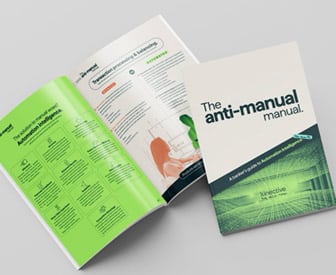But for a last-minute stay by the U.S. District Court for the Northern District of Texas, the Consumer Financial Protection Bureau rule on credit card late fees would have gone into effect May 14. But the delay may not last long, given its reliance on a separate case before the U.S. Supreme Court regarding the constitutionality of CFPB’s funding. A decision on that case is expected soon. (Update: The Supreme Court affirmed the constitutionality of the CFPB’s funding on May 16.)
In his analysis of the district court action, Sanjay Sakhrani , analyst with Keefe, Bruyette & Woods , predicted that card issuers and trade groups will quickly have to seek yet another stay once the first one is undone.
“This scenario is the least positive outcome, as it technically defers the implementation to the day after the ruling on the constitutionality of funding,” Sakhrani wrote. “This gives the industry a short window, all else equal, to get another injunction — which is possible but definitely adds another wrinkle to the situation.”
All of which begs the question: Is it time to radically revisit credit card pricing, rather than getting caught up in a lengthy cycle of legal brinksmanship?
As recent congressional hearings suggest, the campaign to do away with “junk fees” isn’t going away, even if CFPB’s gambit ultimately fails. If the Biden administration gets a second term, banking can expect more of the same, as the President continues to pursue an ongoing agenda against “junk fees” in the private sector.
Are there alternatives to late fees? And are there new ways of thinking about card pricing and logistics in general?
Read more: Despite Ruling Against the CFPB, Banks Must Prepare Alternatives to Card Late Fees

Join industry’s leading AI conference - free passes available!
Ai4 is coming to Las Vegas, August 12-14 2024. Join thousands of executives and technology innovators at the epicenter of the AI community.
Read More about Join industry’s leading AI conference - free passes available!

Redefining CX Through Innovative Social Media Strategies for Financial Services
Learn how Sprinklr is redefining success in the financial sector by harnessing the potential of tailored content and personalized engagement.
Read More about Redefining CX Through Innovative Social Media Strategies for Financial Services
Revamp Card Pricing from the Positive Side
Biota Li Macdonald, director of marketing strategy at Comperemedia, a Mintel company, points out that late fees are essentially punitive. She suggests that it may be time to flip card pricing on its head, ditching punishment charges including late fees and overdraft fees.
In their place could be subscription pricing, assessing a periodic charge for an array of services, including a certain level of late payments (along with other services), all for a monthly fee. Such programs could be tiered, she adds, with higher membership fees adding additional benefits.
“Perk Not Punish,” would be the buzz phrase, Macdonald says. It’s a value proposition that some fintechs have pursued for some time, she adds.
Macdonald cites Apple’s strategy with its Apple Card holder base — they feel they are being cultivated for their lifetime value to the provider, rather than being nickel and dimed. (In fact, the Apple Card does not have any late fees in its pricing.) She says research by her firm indicates that Gen Z and Millennial consumers (the sweet spot for marketers now), favor subscription pricing. Favorites of younger consumers, such as Dave and Acorns, adopted a no-fees subscription model early on. And Macdonald points out that Klarna and Robinhood have both moved into monthly subscriptions in 2024.
A more limited alternative is offering variations on the basic product. Last year TD Bank introduced its Clear and FlexPay cards. The former substitutes two tiers of fees in exchange for short-term credit lines of set maximums in lieu of traditional interest charges, and does not include late fees nor traditional interest charges. FlexPay includes one waiver of late charges annually.
Read more: How the Mastercard/Visa Settlement with Retailers Could Remake the Payments Business

Stop Keeping Card Bill Payments in the 1980s
For his part, payments consultant Richard Crone sees the late-fee issue as an opportunity for the industry to bring payment of card bills into the digital banking age. He argues that current practices actually block cardholders from making timely payments.
Channels first: Crone says many issuers still don’t provide some basics, such as automated payments for consumers whose card account balances would make that practical. What’s more, he says many consumers would like “review and release” options delivered by text or email: They can look at the bill, decide if they have the funds ready, and, if so, tell the bank it is OK to release their funds from their checking account.
He also believes banks should be optimizing card billing for mobile banking: Some issuers still don’t enable card bill payment via their apps. Among other options that should be widely adopted, he believes, is the ability to pay card bills via Zelle, Venmo and similar services.
There’s even a potential role for GenAI, he says — enabling conversations about how much and when to pay card bills.
“The late-fee issue should be seen as a wakeup call,” Crone insists.
If the industry makes this transition, out of fairness as much for logistical benefit, a new approach to pricing develop, says Crone. Using mobile tools consumers could adjust their pricing and fees based on the approach that works best for them.
The ability to custom tailor product features in a banking sector known for high account turnover and cutthroat competition could be an attractive possibility.







